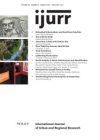China’s economic reform since 1978 has brought profound change, not only to the functioning of the state organization, but also to the structuring of the space economy. Prior to the reform, the Maoist regime introduced a system of state socialism featuring a centrally planned economy, an anti‐commercialist ideology and a development strategy that aimed at the rapid growth of industrial output. Important characteristics of the Maoist plan‐ideological space included an uneven economic landscape dominated by the northern manufacturing heartland, a rigid urban hierarchy vertically integrated by a few large cities, and an ‘invisible wall’ separating urban and rural settlements. The post‐reform market‐regulatory regime has decentralized the power of decision‐making, allowed a market economy to ‘grow out of the plan’, and freed state control over some peripheral areas that are not indispensable to the growth of the national economy. This has given rise to a distinct developmental landscape marked by the rapid expansion of new production space in South China, small towns and the vast countryside. Spatial restructuring in post‐reform China has been primarily a result of state disarticulation rather than increased state intervention. A distinction needs to be made between ‘nation‐state’ and ‘local‐state’ for a better understanding of the operating mechanism of regional development. To solve the mystery of China’s spatial restructuring requires a comprehensive approach that moves beyond the traditional East‐West regional dichotomy and concentrates on the shifting emphasis of the production space between North and South China, between large cities and small towns, and between cities and the countryside.
Details
Written by:
George C. S. Lin
Digital Object Identifier (DOI)
10.1111/1468-2427.00222
About DOI
Read full article as PDF
Read full article as HTML
See the references for this article
